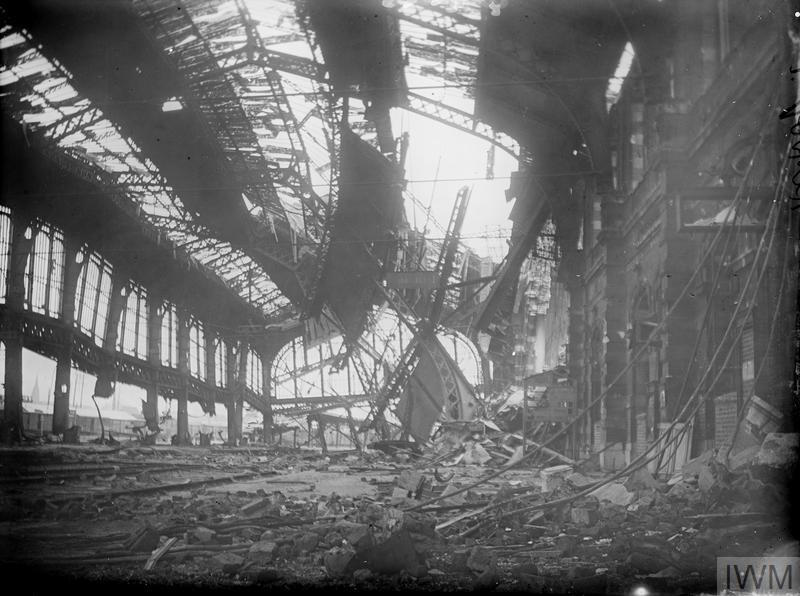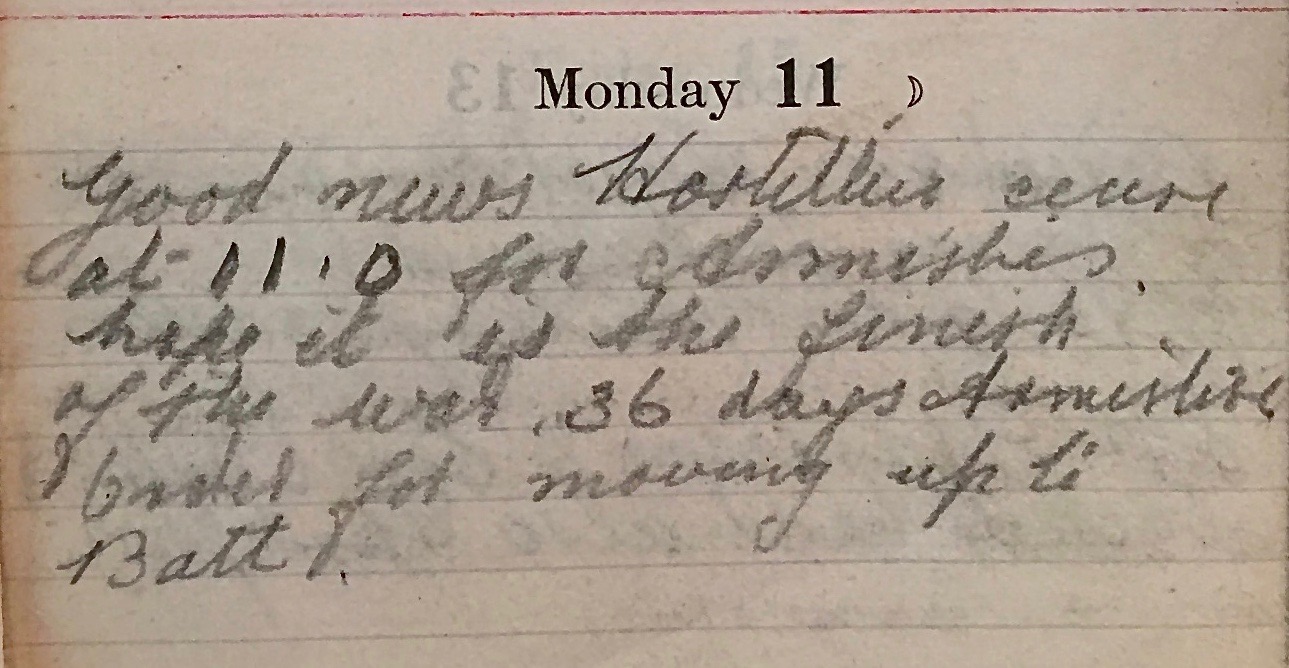Monday November 11th, 1918
Good news. Hostilities cease at 11am for Armistice. Hope it is the finish of the war. 36 days Armistice. Order for moving up to the Battalion.
Armistice & Death
At 10:10 hrs on November 11th, 1918, the 9th Battalion HQ received an order that hostilities would cease at 11:00 hrs. They managed to communicate with all the Companies just before the deadline. Apparently enemy artillery ‘remained active to the last‘ and unfortunately Private James Henry Ernest Frost, 54854 of A Company was fatally wounded just minutes before the ceasefire.º
Private Frost was only 20 years old when he died and his family was from Walsall in Staffordshire. Earlier in the war the majority of officers and men would have been geographically aligned to the Regiment in which they served, now they came from far and wide. This is just one small indicator of how much the British Army has change over the course of the war.
In 1914, the British could call on a force of ~700,000 (the Regular Army, Indian Army, Territorials and Special Reserves). By the time of the Armistice it had a force of just less that 4 million. Over the course of the war Australia, Canada, India, Nepal, New Zealand, South Africa and the United Kingdom had mobilized over 9 million troops into the British Army. By Armistice, almost 1.2 million were dead and just over 2.1 million had been wounded. In other words, 36% were casualties of war.
Overall the Allies, including France, US and Russia, had mobilized over 42 million, almost half of whom were killed, wounded or missing.³
By contrast, the Central Powers had mobilized 25 million, approximately two thirds of whom became casualties of war.
These statistics, horrendous as they are, exclude civilian casualties. Many sources estimate civilian casualties to be much higher than military ones – victims of war, famine, displacement and disease.
Home Front & Sivry
The news of the end of the war came too late for the first editions of the British newspapers. Despite The Guardian running to an eight-page supplement, ‘1914-18 A Retrospective of the War’, it only reports that the Dean of Manchester Cathedral plans to hold a special service at 7:30 tonight, if the Armistice comes into effect today.
Frank’s comment is also rather downbeat and he only records it as ‘good news‘. He mentions a 36 day Armistice and hopes ‘it is the finish of the war‘. Similarly, the Battalion remains on alert and ‘strict orders were given regarding fraternization‘.º

Perhaps all the death and destruction weighs heavy on all hearts, and tempers the troops’ reaction.
66th Division
The 66th Division, under the command of Major-General Bethell, has been at the centre of the Hundred Days Offensive and is one of only two Allied divisions to succeed in every attack. At the time of the Armistice it was in the Sivry-Beaumont area.¹
With great pride, the 9th Battalion notes that it was the furthest east of any of the troops in Rawlinson‘s Fourth Army when the war ended. At this spot, the Battalion will formally site one of the machine guns it captured. A rubbing of the plaque upon the gun, included in the Battalion’s Diary, reads:º
NOTICE
This Gun was captured by C Company 9th Battn., Manchester Regiment
at dawn, 11th November 1918.
The spot on which it now stands was reached by A Coy,
9th Battn., Manchester Regiment, 199th Infantry Brigade. 66th Division.
13th Corps. British Army at 10am on 11th November 1918.
Presumably this humble memorial of this bitter conflict is long gone.
9th Battalion War Diary – 11th November 1918 – Sivry
Battalion held line as described in Appendix No 5 with HQ in the village. Hostilities Ceased at 11.00 hours. Message to all ranks of 4th Army from General Rawlinson received. (Appendix No 5A).
References & Further Reading
º Appendix 5, 9th Bn / Manchester Regiment War Diary, November 1918, copyright National Archives, Kew.
¹ 66th Division on Wikipedia
² British Army during WWI on Wikipedia
³ Allies of WWI on Wikipedia
† WWI – killed, wound and missing on Britannica.com
* Q 423, copyright Imperial War Museums


